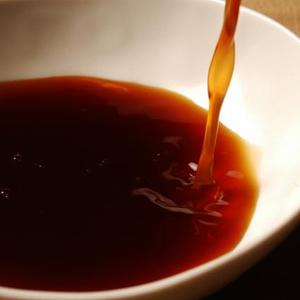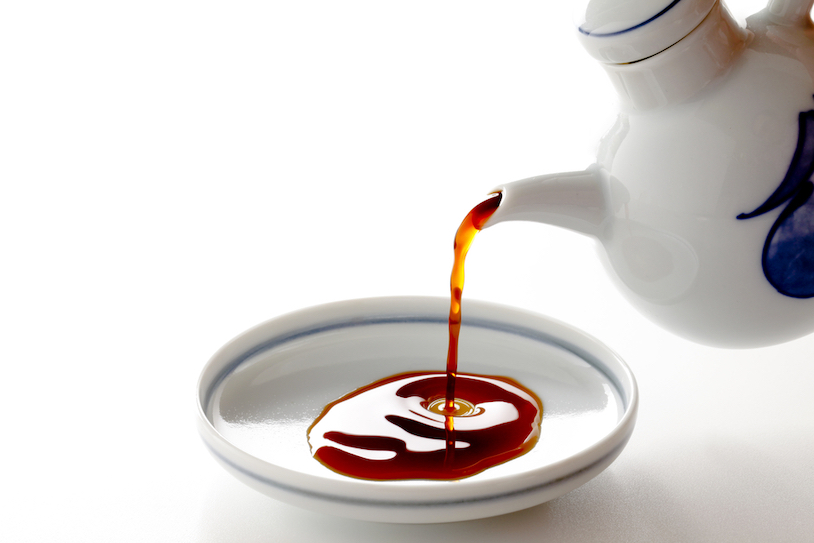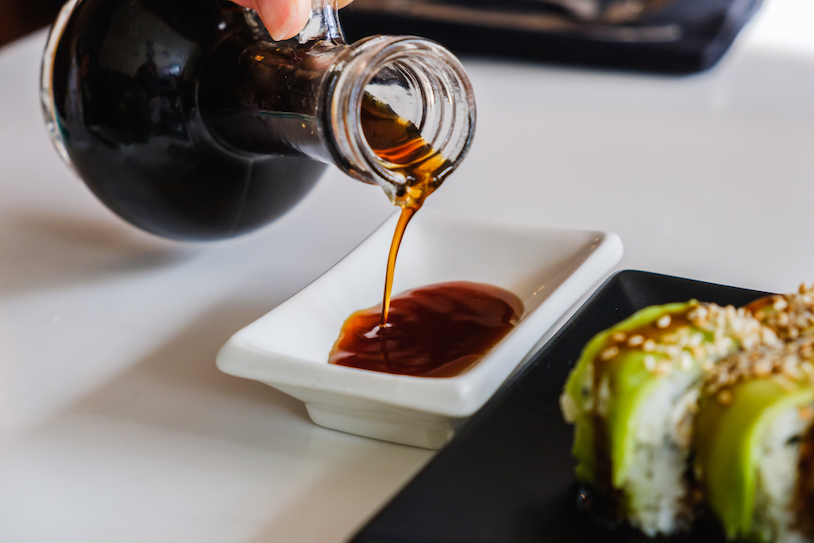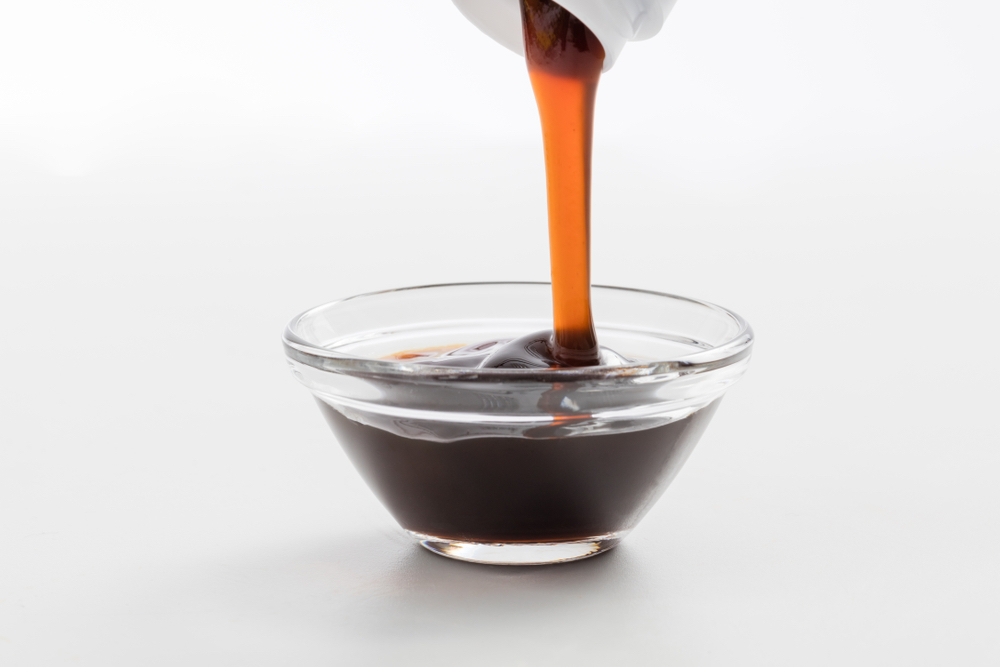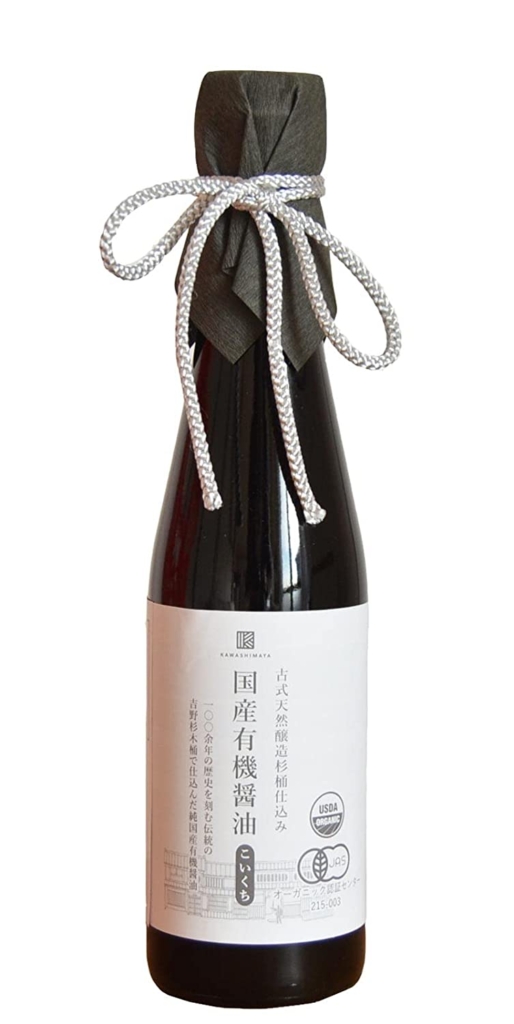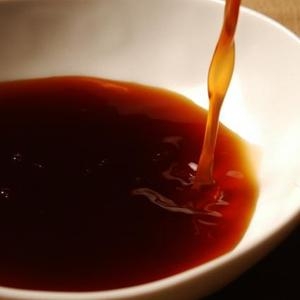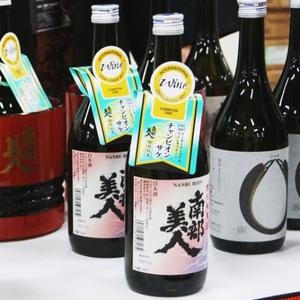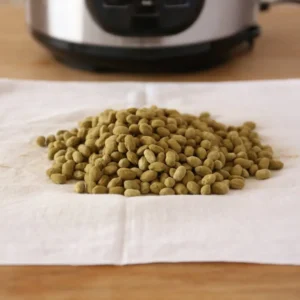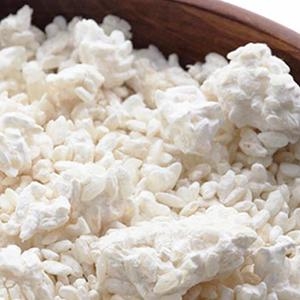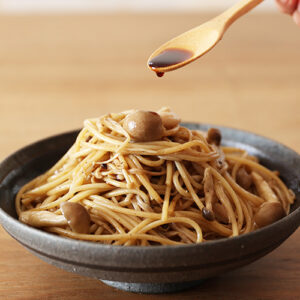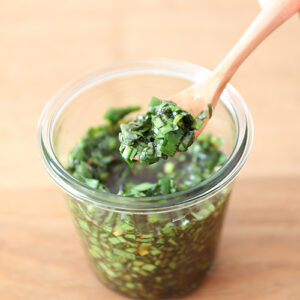If you’ve been to the condiments aisle during your recent grocery hunt, you’ll probably resonate with us on how choosing the right Japanese Soy sauce (Shoyu) can be daunting. How can you narrow down the options and choose the best Japanese soy sauce when you’re spoilt for choices from thin Shoyu, thick Shoyu, Tamari and more?
Kawashimaya compiled all the information you need for your next Shoyu adventure in this concise piece. Learn from this article on types of flavour profile that would most likely suit your palate and cooking, find out authentic Japanese recipes to impress your family friends and study about the special characteristics of Japanese soy sauce that stands out.
No matter the context you represent, there’s the perfect selection for everyone. Read on to find out more!
 Content List
Content List
- What is Japanese Soy Sauce (Shoyu)
- Difference between soy sauce, shoyu, and sweet soy sauce
- Types of Shoyu
- White Soy Sauce ・ Shiro
- Thick Soy Sauce ・ Koikuchi
- Thin Soy Sauce ・ Usukuchi
- Sweet Soy Sauce ・ Amakuchi
- Saishikomi Soy Sauce
- Tamari Soy Sauce
- How To Choose The Right Japanese Soy Sauce
- Tips On Choosing A Good Shoyu
- Pairing Japanese Soy Sauce With Your Cooking
- Japanese Soy Sauce to Avoid
- How to Use Japanese Soy Sauce Deliciously
- Recipes with Japanese Soy Sauce
- How is Japanese Soy Sauce Made
- How to Substitute Japanese Soy Sauce
- Shoyu FAQ
- Recommended Products For Shoyu
What is Japanese Soy Sauce (Shoyu)
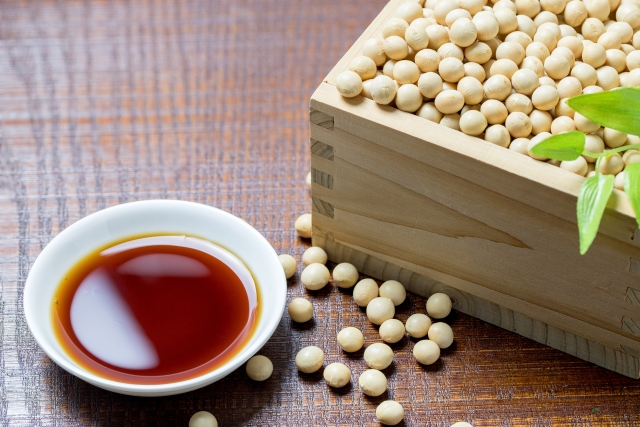
Soy sauce is a staple companion for seasoning not only in Japan but also in many Asian countries. It is made by fermenting and filtering the raw ingredients such as ‘soybean’, ‘wheat’ and ‘salt’ into a liquid form condiment. Fermentation takes place with the help of koji, which is malted rice necessary to create delicate flavours of Japanese soy sauce.
Based on the fermentation period, quality of ingredients, brewing environment and craftsman skills, the production of Shoyu varies. They are usually characterised by five tastes: umami, sweet, salty, bitter and sour. The best shoyu are usually the ones that have been fermented for two years or longer. Long fermentation period and natural brewing results in pleasant shoyu packed with umami flavour.
Most Japanese cuisine uses soy sauce for its defining taste along with mirin and sake. Figuratively, the absence of soy sauce in Japanese cooking resembles cooking Italian cuisine without olive oil. Besides, knowing which Japanese soy sauce works best for your cooking is important to creatively sculpt your dish. Some recipes call for light soy sauce, some call for dark soy sauce, while others dance well with tamari sauce.
Throughout Japan, people enjoy different taste of Shoyu. People in Kyushu and Hokuriku areas have deep roots of savouring sweet soy sauce, that is amakuchi soy sauces. On the contrary, those in Kanto area prefers dark soy sauce whereas the Kansai population enjoy thin soy sauce (usukuchi). Towards the south in Chubu region, the production of Tamari Sauce and light soy sauce are abundant. Let us take a look at the kinds of Japanese soy sauce (Shoyu) available and choose what suits your palate the best! Continue reading to find out.
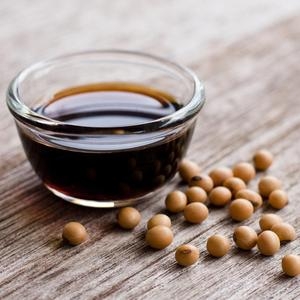
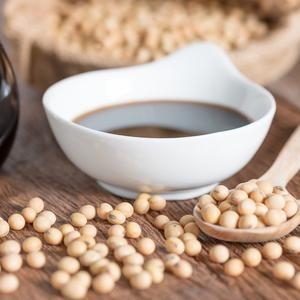
Difference between soy sauce, shoyu, and sweet soy sauce
Soy sauce is native to Japan, with slight differences from the Chinese counterparts. History records its first existence about 2,000 years ago where koji was used to ferment soybeans and roasted wheat. It is from this traditional brewing methods of soy sauce combined with soybeans and wheat that produce the perfect umami balance and flavours in Japanese soy sauce.
The main differences of Chinese soy sauce and Shoyu are the percentage of soybeans, brewing methods, ingredients and flavours. The former is usually chemically brewed and composed by soybeans without the use of wheat. Hence, the taste is more salty compared to Japanese soy sauce. Chinese soy sauce is usually represented by ‘light’ and ‘dark’ soy sauces. ‘Thin’ soy sauce are known to be lighter in texture whereas the latter is thicker and darker in colour but less salty than the light soy sauce.
Shoyu, or Japanese soy sauce is made from a mash of soybeans and wheat. Based on the brewing process, Shoyu can be categorised by five flavours: umami, sweet, salty, bitter and sour. Therefore, it’s texture varies from one to another. For instance, sweet soy sauce or Asakuchi, is unlike that of regular Kecap Manis popular in Southeast Asia. While it has a pronounced sweetness, the sharp flavour profile of Shoyu is still evident and less thick. Shoyu is considered lighter in texture compared to Kecap Manis.
On the contrary, sweet soy sauce or Kecap Manis, is made of soybeans, palm sugar and selected spices such as star anise and galangal. More commonly used in Southeast Asian countries like Indonesia, Malaysia, and Thailand, it is first introduced to Java by the Chinese migrants during the mid-19th century. During those times, local people enjoyed sweet things, therefore palm sugar (or gula Jawa) was added to the rendition. The duet between palm sugar and soy sauce are profound, contributing to the dark colour, syrupy texture and caramel-like entry.
Recommended Products for Shoyu
Types of Shoyu
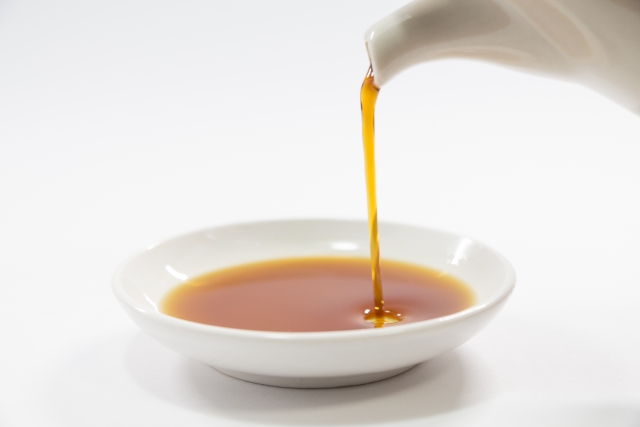
Before choosing the right Shoyu, we need to understand different types of Japanese soy sauce and what makes each of them unique. Most people would think that Shoyu comes in one type, but there are a couple of others.
White Soy Sauce ・ Shiro
Color: clear light yellow Ingredients: Wheat percentage is higher than the soybean Though it has the thinnest color, shiro soy sauce is the most salty type of all Shoyu.

Thick Soy Sauce ・ Koikuchi
Color: Dark brown Ingredients: 50% soybeans 50% wheat This Shoyu is an all purpose sauce. When someone says Shoyu or Japanese soy sauce, this is usually what comes to mind. Koikuchi soy sauce is a very versatile condiment because the taste goes well with almost anything.
View Product
Thin Soy Sauce ・ Usukuchi
Color: clear burnt orange or clear brown Ingredients: 50% soybeans 50% wheat This Shoyu does not add much colour to the cooking. Usukuchi soy sauce is saltier than thick soy sauce. It’s a popular option in the Kansai region such as Osaka or Kyoto.

Sweet Soy Sauce ・ Amakuchi
Color: dark brown, sometimes clear dark brown Ingredients: Soybean, wheat, sweetening, vegetable protein It has a sweet taste, but unlike Southeast Asian sweet soy sauce, amakuchi soy sauce retains the sharp flavour of Shoyu.

Saishikomi Soy Sauce
Color: Dark Brown
Ingredients: double amount of 50% soybeans and 50% wheat
Saishikomi soy sauce goes through a long brewing process. The fermentation period usually takes two to three years. During this process, it cultivates great umami flavour. This type is also more fragrant than Tamari.
Saishikomi means re-brew. Shikomi is the process where the salted water is added to the soy solution (moromi). During shikomi process, saishikomi soy sauce is brewed not with salted water, but with an already finished Shoyu batch. Hence, the rich flavor.

Tamari Soy Sauce
Color: Dark brown to black
Ingredients: soybeans with less to no wheat
Tamari sauce has been gaining popularity lately because it can be a great alternative for people who cannot tolerate wheat products. Some even say that this type is healthier than regular soy sauce because it contains less sodium and more protein.
Brewed for a long time, tamari has a thick and complex flavor profile. It also has a prominent umami.

How To Choose The Right Japanese Soy Sauce
Tips On Choosing A Good Shoyu
The best soy sauces are usually the ones that have been fermented for two years or longer. The maturation of soy sauce give so much dimension and complexity to its taste. When soy sauce is brewed naturally, it will have a pleasant umami flavor, not just sharp saltiness.
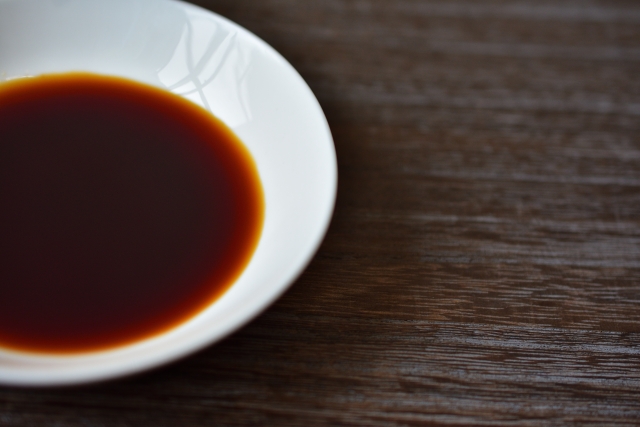
Each soy sauce is different, so one type of soy sauce might suites your ingredients better than the other. For choosing the right soy sauce according to your cooking, you can read the details on the next part.
Pairing Japanese Soy Sauce With Your Cooking
Good pairing of soy sauce will not only add flavor to your dish but also enhance the natural taste of the ingredient itself. Here is the guide to choose the best soy sauce for your cooking.
| Type of Japanese Soy Sauce | Best Used For Cuisines Like |
|---|---|
| Shiro (white) | Tofu, chawanmushi (steamed silk tofu), white fried rice, salad dressing |
| Usukuchi (thin) | Soup, Japanese omelette, simmered dishes |
| Amakuchi (sweet) | White fish sashimi, onigiri, broiled fish |
| Koikuchi (thick) | Goes well with almost anything |
| Saishikomi | Red fish sashimi, red meat steak, Japanese curry |
| Tamari | Chicken teriyaki, red fish sashimi |
Japanese Soy Sauce to Avoid
Shoyu comes in many forms, especially outside Japan. If you happen to be choosing between many soy sauces, avoid chemically brewed soy sauce which may give off an artificial flavour. Stick to natural-brew soy sauce made from soybeans, wheat, salt, and water. Chemically brewed soy sauce is usually artificially salty, aside from their questionable ingredients. To identify if the soy sauce is chemically cultivated or not, refer to the list of ingredients on the packaging. Natural-brew soy sauce is made from soybeans, wheat, salt, and water. If you found corn syrup or food coloring on the ingredients, it should be a noticeable red flag.
How to Use Japanese Soy Sauce Deliciously
Japanese soy sauce is very diverse and all-purpose. It goes well with soft tofu or stewed foods, for making shoyu ramen, dipping sauce for sashimis and more.
To accompany the taste of natural ingredients such as cold tofu and sashimi
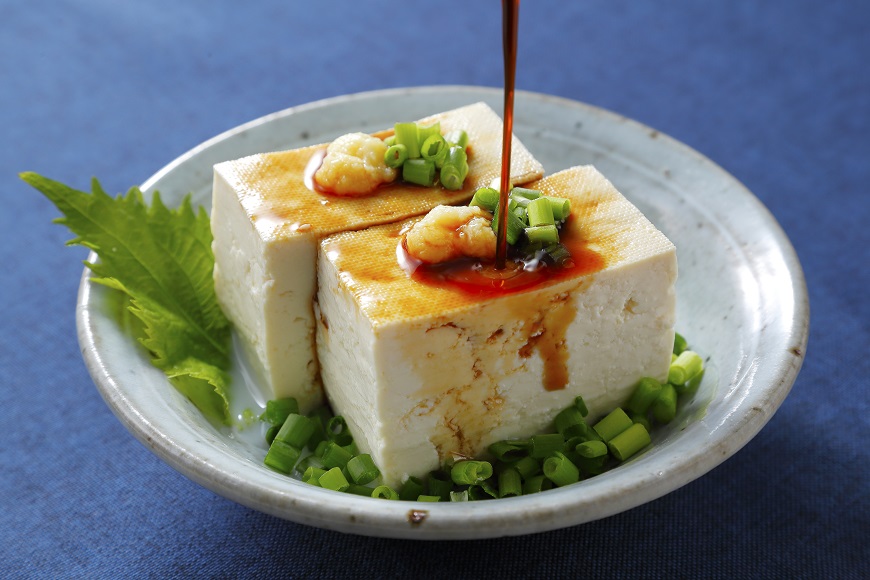
Over grilled fish, omelet, grilled eggplant, etc.
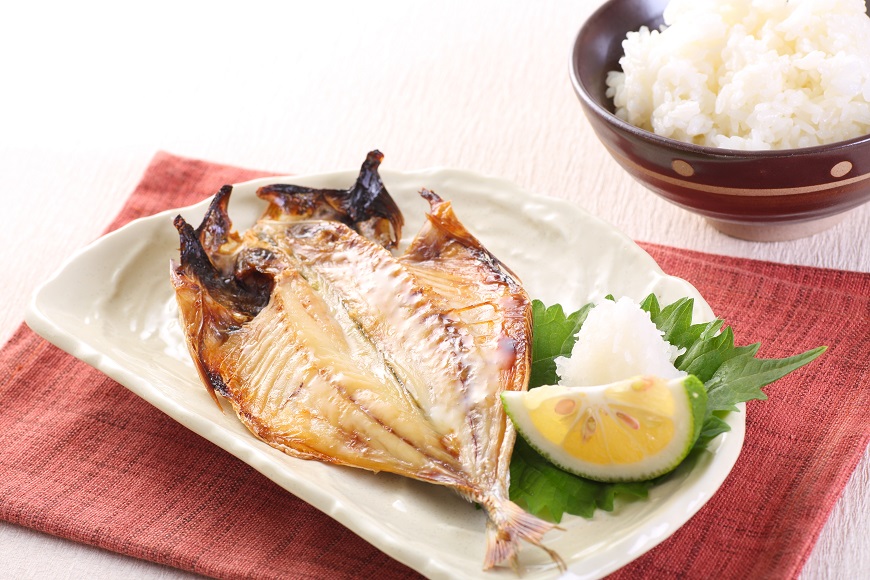
When stir-frying food, meat or sautéing fish to release prominent fragrance
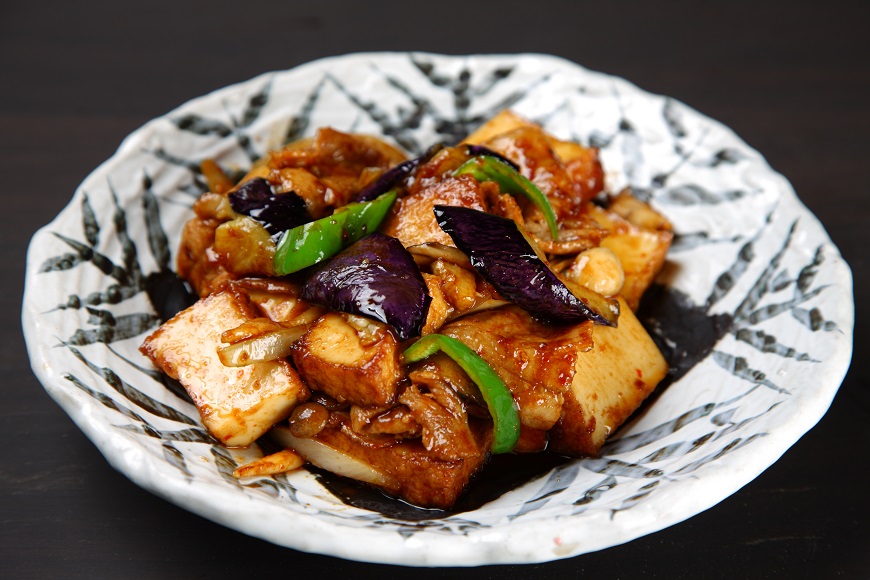
Recipes with Japanese Soy Sauce
First time cooking Japanese food? Don’t worry, you can use these recipes as a guide or inspiration for your next cooking.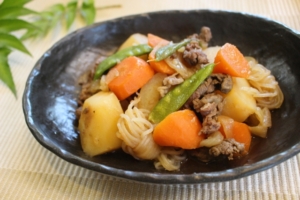
Nikujaga (Stewed Beef And Potato)
Ingredients
- 150 g Thin Beef Slices
- 2 Potatoes
- 1 Carrot
- 1 Onion
- 80 g Konyaku Noodles
- 8 pieces Snap Peas
- 2 tbsp Koikuchi Thick Soy Sauce
- 1 tbsp Sugar
- 2 tbsp Cooking Sake
- 100 ml Dashi Stock (You can also use store bought dashi powder mixed with water or use your favorite kind of stock)
- 0.5 tbsp Vegetable Oil
Instructions
- Cut potatoes and carrot into bite sized pieces (about 1 inch). Cut onion into 4 wedges.
- Remove the string part from pea pods.
- Cut konyaku into small pieces and hard boil it for 1 minute.
- Heat oil on the frying pan and cook the beef slices until brown, be careful not to overcook the beef and set aside once done.
- With the leftover oil and the meat grease on the pan, sauté potatoes and carrots on until half cooked.
- Add onion and konyaku to the stir fry until all ingredients are coated with oil.
- Place the cooked beef back into the pan and mix well.
- Add dashi stock, sugar, sake, soy sauce. Mix well and put on the lid to simmer for 10 minutes or until the potato is soft. Finally, add the snap peas.
- Let the nikujaga simmer again for about 2 minutes before serving.
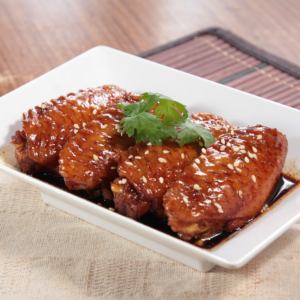
Japanese Honey Soy Sauce Glazed Chicken Wings
Ingredients
- 6 pieces Chicken Wings
- 0.25 tbsp Salt
- 0.25 tbsp Pepper
- 4 tbsp Potato Starch
- Oil (for frying)
- 4 tbsp Japanese soy sauce
- 2 tbsp Cooking Sake
- 2 tbsp Mirin
- 2 tbsp Pure Honey
- 1 cm Ginger (grated)
- Toasted Sesame Seeds (for garnish)
Instructions
- Turn on the stove and heat the oil until about 150-160˚C.
- Season the chicken with salt and pepper and dredge lightly with potato starch until all surface is covered. Fry the chicken wings until crispy and golden brown. Set aside after done.
- Prepare the glaze sauce by mixing soy sauce, cooking sake, mirin, honey, and grated ginger in a small bowl.
- Heat the frying pan. Toss the fried chicken wings and the glaze mix, make sure the wings are coated with the glaze. Stir until the sauce simmers and thicken.
- Chicken wings are ready to be served. Finish with toasted sesame seeds.
Notes
How is Japanese Soy Sauce Made
The most important part of making Japanese soy sauce is “making koji”. Koji refers to steamed grains, such as rice, barley, and/or soybeans that have been inoculated with koji mold or koji-kin in Japanese. Basically, it’s the essential component in fermented Japanese food, such as shoyu, miso, mirin and sake.
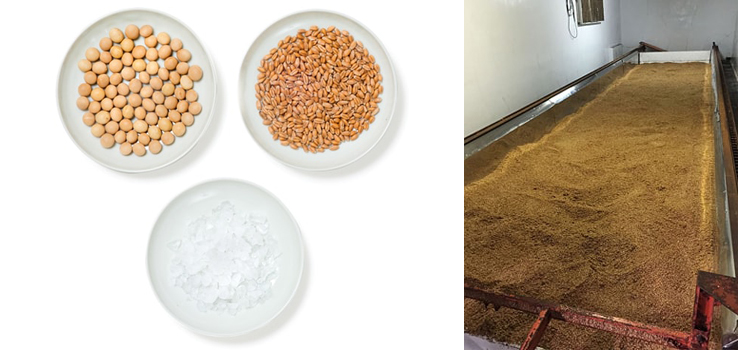
Following that, fermenting quality ingredients would also rely on suitable temperature and humidity. The best shoyu are usually the ones that have been fermented for two years or longer. Long fermentation period and natural brewing will result in a shoyu with pleasant umami flavour.
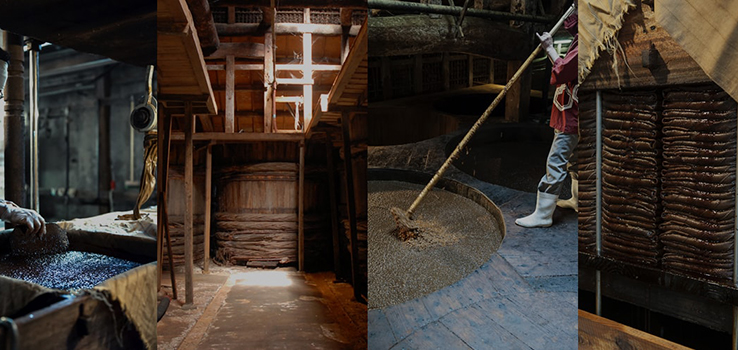
About 3 days later when the koji is ready, it is moved to a large barrel. The barrels are also referred to as kioke, made of koya maki (Japanese umbrella pine tree) known to be extremely resilient and waterproof. Dark soy sauce is then prepared by mixing salt water, which creates ‘Moromi’– a blend of yet-to-mature soy sauce stimulated by koji-making in the initial process. It is then left to age for a year or more. During the Moromi fermentation stage, the mash of aspergillus and yeast promotes lactic acid bacteria which is vital for brewing Japanese soy sauce. After some time, the Moromi will decompose and mature.
To obtain fresh Shoyu, the aged mash is squeezed on a cloth little by little to create layers. This is done over 3 days where the yeast is still ‘alive’. Then, heat is applied to release the fragrance of the Shoyu. In the same way, heating the elements will sterilised the content. The aroma and taste of Shoyu changes depending on the temperature setting and heating time. The mixture is then set aside to cool down naturally.
These entire processes are observed by skilful craftsmen to ensure quality production of Japanese soy sauce. Without years of expertise and experience by skilful craftsmen, Shoyu cannot deliver it’s widely-known pleasant umami flavour.
How to Substitute Japanese Soy Sauce?
The sharp and distinct umami flavour of Japanese soy sauce makes it rather difficult to substitute Shoyu in Japanese cooking. Shoyu has an aromatic saltiness that is hard to be replaced by other condiments. While Tamari Sauce is interchangeable with Shoyu due to their similarities in colour and flavour, their stark differences still remain in terms of use and texture.

Shoyu FAQ
- Is soy sauce and shoyu the same condiment?
- They are slightly different based on the percentage of soybeans, brewing methods, ingredients and flavours. General soy sauce is usually chemically brewed and composed by soybeans without the use of wheat. Japanese soy sauce is made from a mash of soybeans and wheat, using natural brewing process. These methods create distinct flavour profiles such as umami, sweet, salty, bitter and sour.
- What does shoyu taste like?
- Depending on the type of shoyu, the taste varies. The aroma and taste of Shoyu changes depending on the temperature setting and heating time. For instance, thin soy sauce (Usukuchi) is saltier than thick soy sauce, whereas sweet soy sauce (Amakuchi) is sweet with a sharp flavour of Japanese soy sauce.
- What are the types of shoyu?
- There are at least six types of Shoyu. They are White Soy Sauce (Shiro), Thick Soy Sauce (Koikuchi), Thin Soy Sauce (Usukuchi), Sweet Soy Sauce (Amakuchi), Saishikomi Soy Sauce and Tamari Soy Sauce. Each has distinct flavour profiles and types of uses.
- Is soy sauce good for your health?
- Generally, soy sauce contains high amount of salt. Therefore, it is advisable to consume soy sauce moderately. There are, however, multiple Japanese soy sauce options produced with less sodium. For instance, Tamari sauce has been gaining popularity because it contains less sodium and more protein. It is recommended for those who cannot tolerate wheat products. We recommend giving this a try.
- Is shoyu gluten free?
- Tamari soy sauce is a great alternative for people who cannot tolerate wheat products. Brewed for a long period of time, tamari has a thick and complex flavour profile which produces prominent umami. It also contains less sodium and more protein. We recommend tamari soy sauce for those who wants to avoid gluten. Read more on Tamari soy sauce here.
- How to choose the best shoyu?
- It depends what your personal preferences are and what dish you’re intending to make. The best soy sauces are usually the ones that have been fermented for two years or longer. The maturation of soy sauce give so much dimension and complexity to its taste. When soy sauce is brewed naturally, it will have a pleasant umami flavour, not just sharp saltiness. However, avoid chemically brewed soy sauce which may give off an artificial flavor. Stick to natural-brew soy sauce made from soybeans, wheat, salt, and water.
- How to deliciously use shoyu?
- Japanese soy sauce is very diverse and all-purpose. It goes well with soft tofu or stewed foods, for making shoyu ramen, dipping sauce for sashimis and more. Check out some of our recommendations.
- Can I substitute Japanese soy sauce with something else?
- Unfortunately, it is rather difficult to substitute soy sauce in Japanese cooking. Soy sauce has that aromatic sharp saltiness that is hard to replace with other condiment. Although, if you’re looking for gluten free option, some brands actually produce gluten free soy sauce (some people who chose to avoid gluten can use tamari soy sauce as well) These days, a lot of soy sauce brands have accommodate people with special needs. For example, one brand in Japan even make ‘soy’ sauce from fava beans to accommodate those who are allergic to soy.
- How to store shoyu?
- Naturally brewed soy sauce needs to be stored properly after opening. Refrigerate Shoyu after opening to retain freshness of product. We recommend storing Shoyu at a cool and dry place.
- Does shoyu have a shelf life?
- Due to the natural brewing process of Japanese soy sauce, Shoyu should be stored in a cool and dry place to retain it’s flavour profile. Typically, Shoyu can last up to two years if properly stored. If Shoyu gives off a strange smell, it’s a sign to discard it.
Recommended Products For Shoyu
Buy On Amazon USA
Kawashimaya Organic Shoyu 13.8 fl oz (410ml)
High-quality organic Japanese shoyu soy sauce: Barrel-aged for over one year・Additives-free・Made from 3 ingredients・Umami packed・100% Made in Japan. The versatile umami condiment for sushi, stir-fries, meat, pasta, eggs, tofu, vegetables, and more. Just a tiny amount can elevate any dish.

